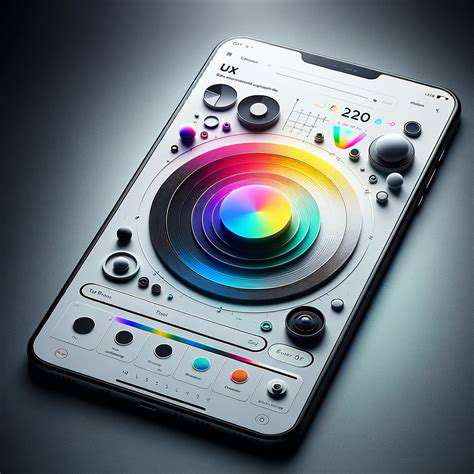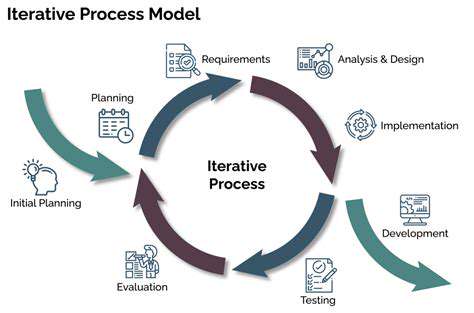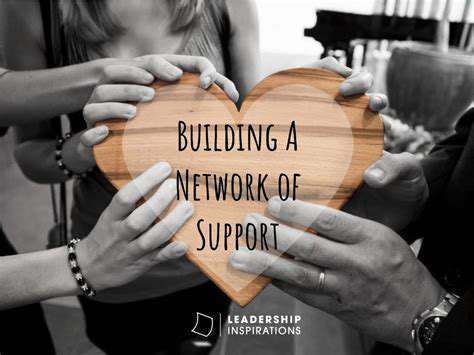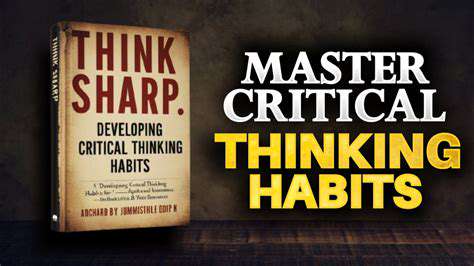Guide to Learning User Experience (UX) Design

Defining UX Design Principles
When we talk about user experience (UX) design, we're discussing a discipline that extends well beyond surface-level visuals. It's about crafting the complete journey a user takes with a product or service - from their first encounter to ongoing support after purchase. Exceptional UX design places user needs at its core, striving to deliver interactions that feel effortless, instinctive, and genuinely satisfying. Every touchpoint matters, whether it's how information is organized on a webpage or how smoothly an app guides users through tasks. Deep insights into how users think, what drives them, and where they struggle form the bedrock of meaningful UX solutions.
The guiding principles of UX design create the framework for successful digital experiences. These fundamentals cover all aspects from how easily people can use a product to how information is structured and presented. Having clear, well-articulated principles maintains uniformity throughout the user experience, making interactions more predictable and rewarding. The goal is to create journeys that don't just function well but also create positive emotional connections, fostering greater engagement and long-term user commitment. Applying these standards consistently across every phase of design - from initial concepts to final refinements - helps create experiences that leave lasting positive impressions.
Key Elements of UX Design
Comprehensive user research stands as the cornerstone of effective UX work. Truly understanding your audience - their requirements, preferences, and behaviors - is absolutely essential for creating solutions that resonate. This means employing diverse research techniques like detailed surveys, in-depth interviews, and hands-on usability tests to uncover valuable insights about how people interact with products. These findings then directly shape design choices, ensuring the end result aligns perfectly with user expectations.
How information is organized represents another vital component. Effective structuring of content in logical, intuitive ways helps users find what they need without frustration. Thoughtful information architecture doesn't just improve usability - it elevates the entire experience, making interactions feel smooth and effortless. When users can navigate naturally and find what they need quickly, their satisfaction with the product increases significantly.
Interaction design focuses on defining how users will engage with the product's interface and features. Anticipating and designing for user actions creates experiences that feel natural and empowering. This involves crafting intuitive controls and flows that support user goals while minimizing confusion or unnecessary steps. When interaction design is executed well, users feel capable and confident as they move through the experience.
Essential UX Design Principles: Building a Solid Foundation
Understanding User Needs
At the heart of exceptional UX work lies deep empathy for the people who will use your product. This means going beyond basic demographics to understand their daily challenges, motivations, and how your solution fits into their lives. What technology do they typically use? What skill levels do they have? Comprehensive research through interviews, surveys, and hands-on testing provides these crucial insights.
When you truly grasp what users need, you can create solutions that feel tailor-made for them. This user-centered approach forms the foundation of all successful design work.
Information Architecture and Navigation
Well-planned information structures make navigation intuitive. Users should always know where to find what they need without unnecessary searching. Effective architecture creates clear hierarchies, logical groupings, and labeling that makes immediate sense. How you organize and present information directly impacts how smoothly users can move through your product.
Consistent navigation elements and visual cues act as helpful guides, allowing users to move confidently through your interface to complete their tasks.
Intuitive Interaction Design
Great interaction design makes interfaces feel familiar and easy to use. Controls and elements should behave in ways that match user expectations, requiring minimal explanation. The sequence of actions should flow naturally from one step to the next, creating a sense of effortless progression through tasks.
Accessibility and Inclusivity
Designing for accessibility means creating experiences everyone can use, regardless of ability. Following established guidelines (like WCAG) ensures your product works for people with visual, hearing, motor, or cognitive differences. This inclusive approach isn't just ethically important - it expands your potential audience while creating better experiences for all users.
Visual Design and Aesthetics
While functionality comes first, visual appeal significantly impacts how users perceive your product. Thoughtful use of color, typography, imagery, and layout creates cohesive, memorable experiences that reinforce brand identity and resonate with your audience.
Usability Testing and Iteration
Regular testing with real users reveals pain points and improvement opportunities. Observing how people interact with your product provides invaluable insights you can't get any other way. This feedback fuels continuous refinement, ensuring your design keeps getting better. Testing should happen throughout development, from early prototypes to final versions.
User Feedback and Continuous Improvement
Actively seeking and implementing user feedback keeps your product relevant and valuable over time. This input can come from surveys, reviews, or direct comments. Valuing and acting on this feedback creates a dynamic product that evolves with user needs, maintaining its usefulness and appeal long after launch.
Crafting Effective User Flows and Wireframes
Understanding User Needs and Goals
Creating effective user flows begins with deep understanding of your audience. This requires more than surface-level knowledge - you need genuine empathy and thorough research into their motivations, challenges, and desired outcomes. Comprehensive research methods like interviews and usability testing should inform every design decision. When you truly understand your users, you can create flows that feel completely natural to them.
Identifying specific user tasks and objectives is equally important. What problems are they trying to solve? What information do they need? Mapping these out helps structure flows that guide users smoothly toward their goals, avoiding confusion or frustration.
Defining the Scope and Structure of the User Flow
Before visual design begins, clearly define your flow's structure and boundaries. Outline key steps users will take to accomplish their goals, considering all possible paths and interaction points. Sketching these journeys early helps identify potential trouble spots, ensuring the final flow feels clear and logical.
Developing Clear and Concise Wireframes
Wireframes provide the structural blueprint for your interface, focusing on functionality rather than visual details. They map out element placement, information hierarchy, and interaction points, facilitating clear communication between designers and developers. Simple shapes and text placeholders help visualize the user journey early, catching potential issues before they become costly problems.
Iterating and Refining the Design
User flows and wireframes evolve through continuous refinement. Gathering feedback at each stage ensures the design truly meets user needs. Testing different versions helps identify improvements, creating increasingly intuitive experiences. This iterative approach keeps the focus firmly on users throughout the design process.
Implementing and Testing the Final Design
After finalizing flows and wireframes, thorough testing ensures the implemented design delivers the intended experience. Usability testing with real users reveals any remaining issues, allowing for final refinements. Careful documentation and developer communication ensure smooth translation from design to functional product.
Iterative Design and Feedback Incorporation

Iterative Design Principles
Iterative design represents a fundamental shift in product development, embracing continuous cycles of creation, evaluation, and improvement. This approach recognizes that first attempts rarely achieve perfection and that meaningful progress comes through ongoing refinement. By consistently integrating user feedback, iterative design produces solutions that better align with real user needs, ultimately creating more satisfying experiences.
A core strength of this approach is its adaptability. Being able to pivot based on user data ensures products evolve in directions that truly resonate with audiences. This flexibility is particularly valuable when user responses prove unexpected or surprising.
Gathering User Feedback Effectively
Collecting meaningful feedback requires thoughtful methodology selection. Different approaches - from detailed interviews to broad surveys - each provide unique insights. Using multiple feedback channels creates a more complete picture of user needs and preferences. The key is matching methods to your specific product goals and user characteristics.
For example, interviews uncover rich qualitative insights about user motivations, while surveys efficiently gather quantitative data from larger groups. Choosing the right mix of methods ensures you capture the most valuable user insights possible.
Incorporating Feedback into Design
Effectively implementing user feedback requires systematic analysis and clear communication. Identifying patterns in the data helps prioritize the most impactful changes. Maintaining open dialogue between designers and stakeholders ensures everyone understands how feedback is shaping the evolving design.
Testing and Refining Designs
Rigorous testing of each iteration is essential. Evaluating both usability and functionality helps identify areas needing improvement. The goal is creating products that are not just visually appealing but genuinely effective in real-world use.
The Importance of Communication and Collaboration
Successful iteration thrives on open communication and teamwork. Keeping all stakeholders informed about design goals, feedback, and changes maintains alignment throughout the process. Transparent communication channels streamline the iterative process, allowing for quick adjustments when needed. This collaborative environment maximizes the value of user feedback, resulting in more refined, user-centered solutions.







![How to Learn a New Language Fast [Proven Methods]](/static/images/31/2025-05/FocusonCommunication3APracticeMakesPerfect.jpg)
![How to Use AI Tools for Studying Effectively [Ethics]](/static/images/31/2025-05/MitigatingPotentialEthicalConcernsAssociatedwithAIStudyTools.jpg)


![Guide to Learning About [Specific Topic, e.g., Climate Change]](/static/images/31/2025-05/TheUnfoldingImpactsofaChangingClimate.jpg)